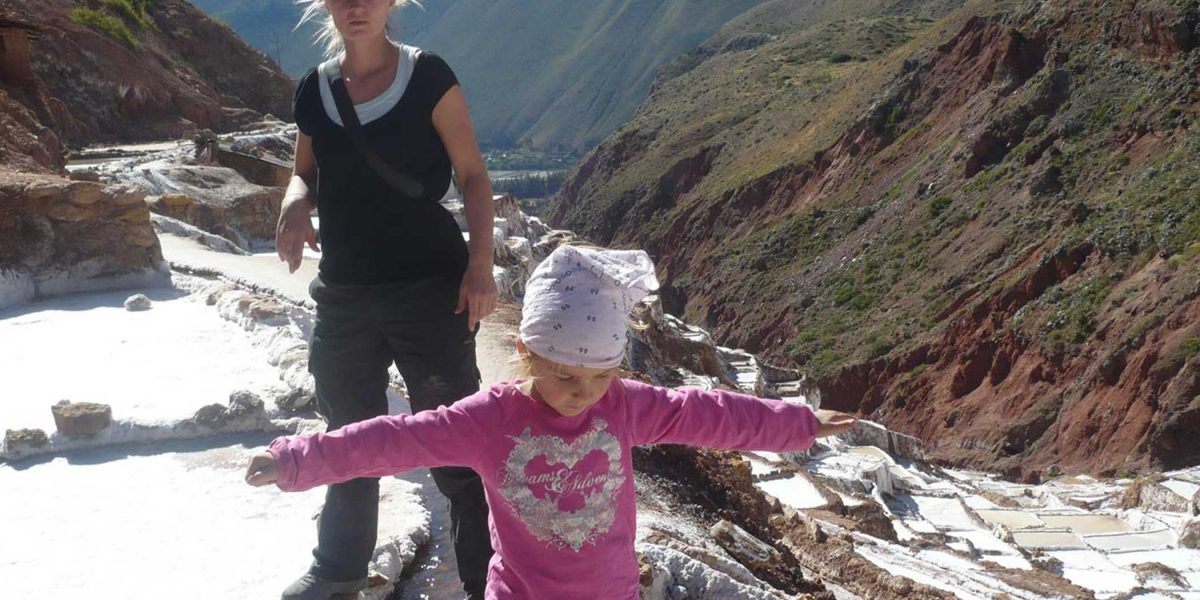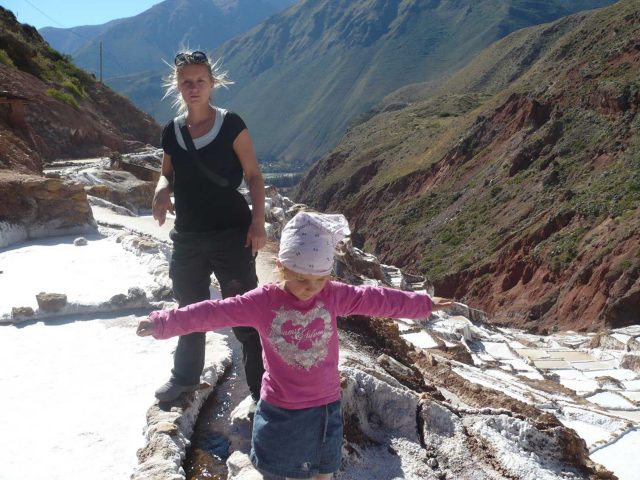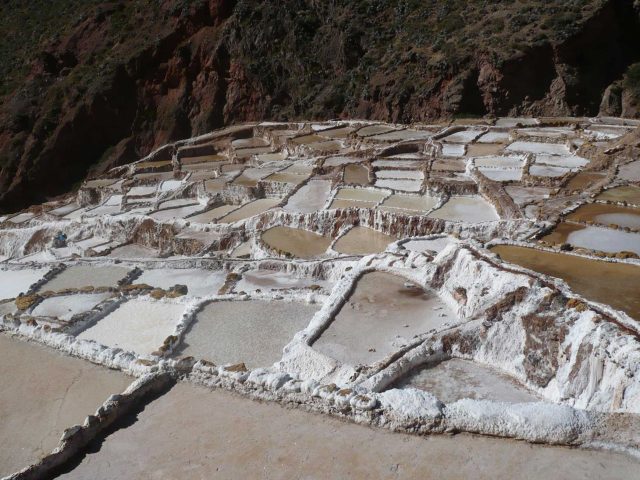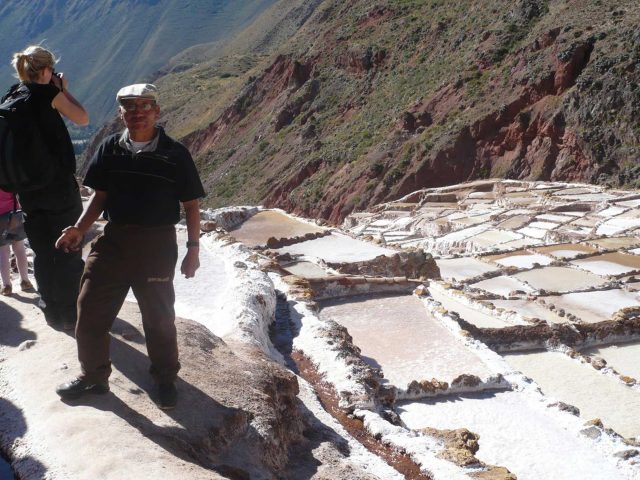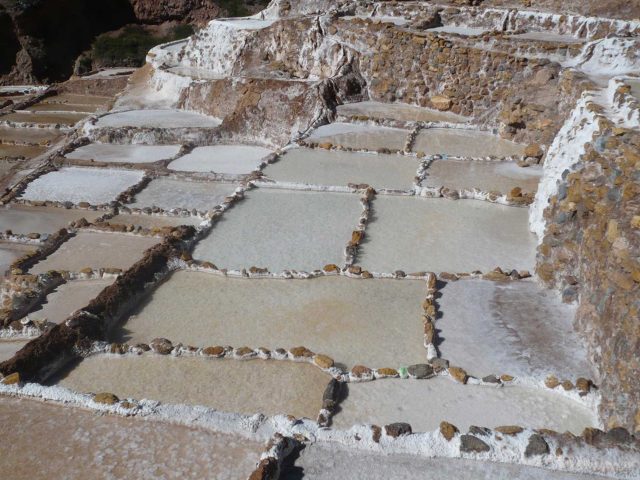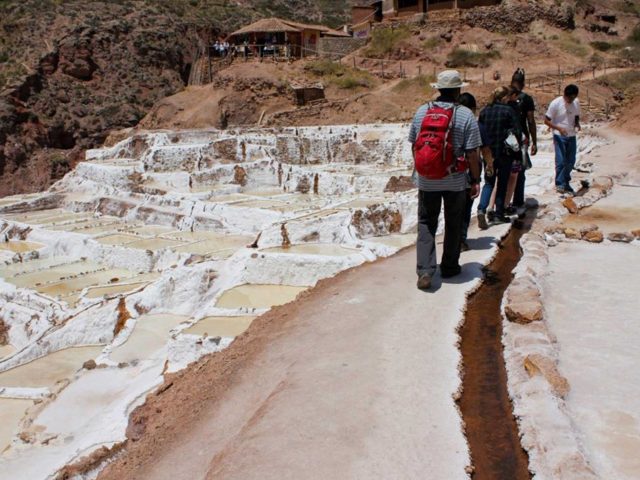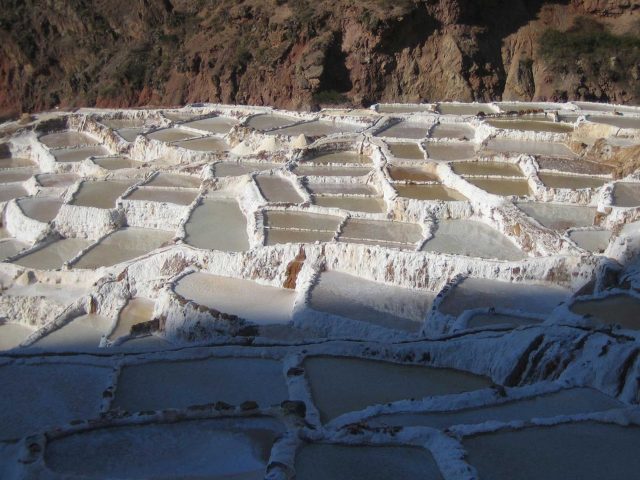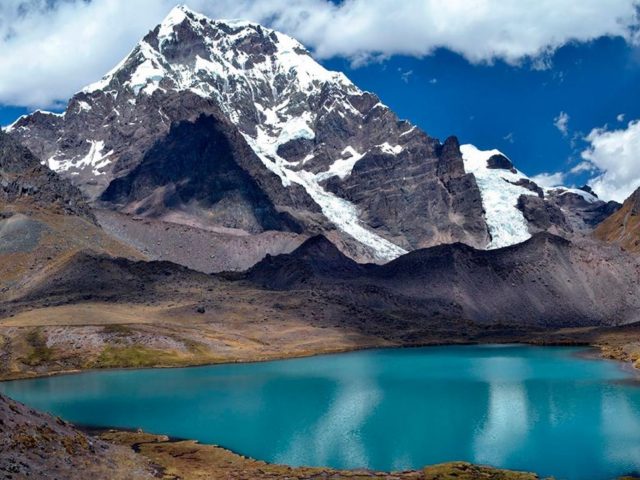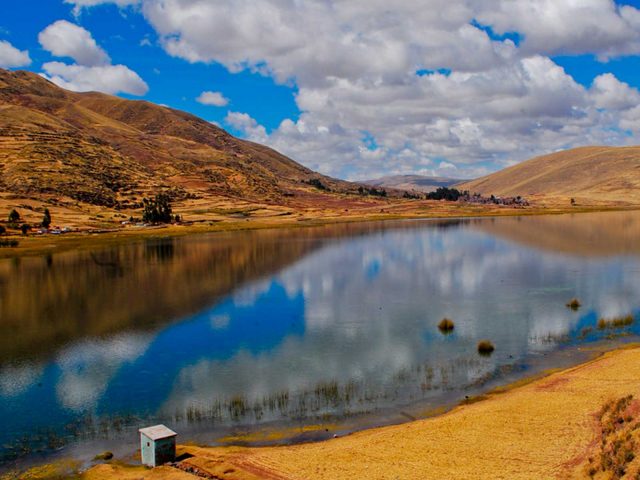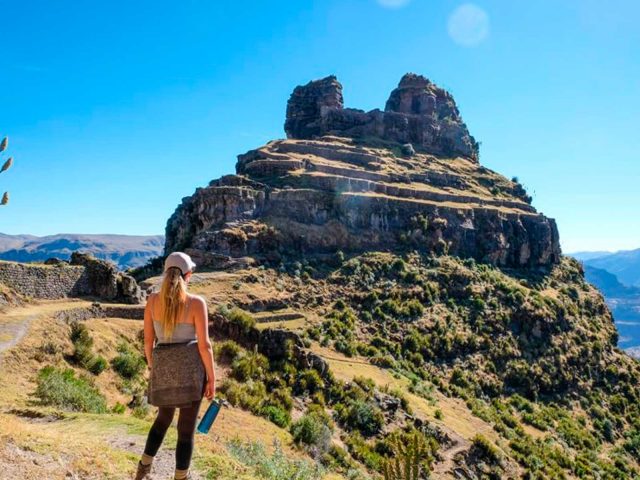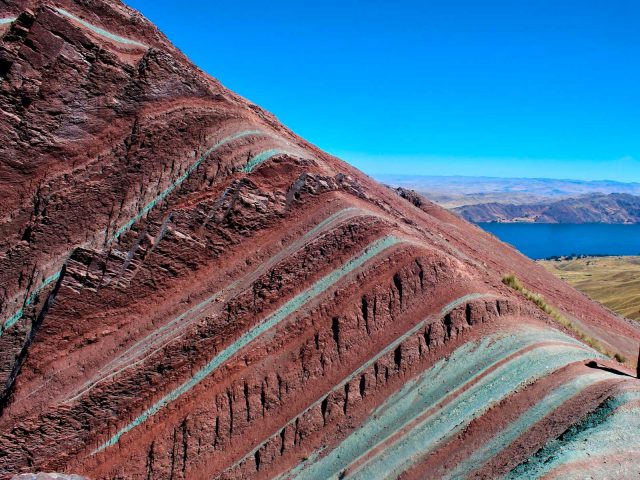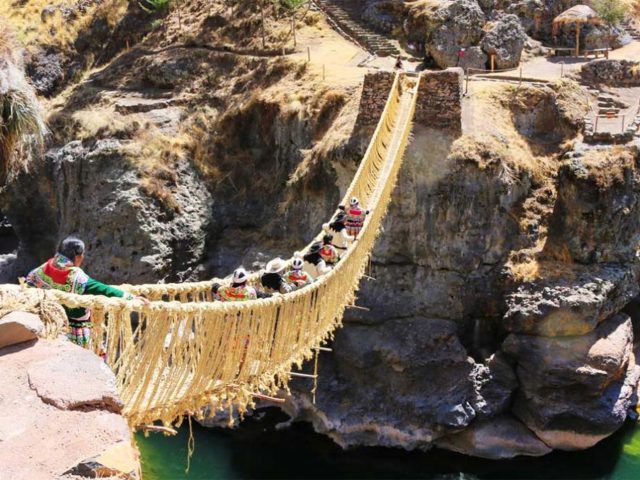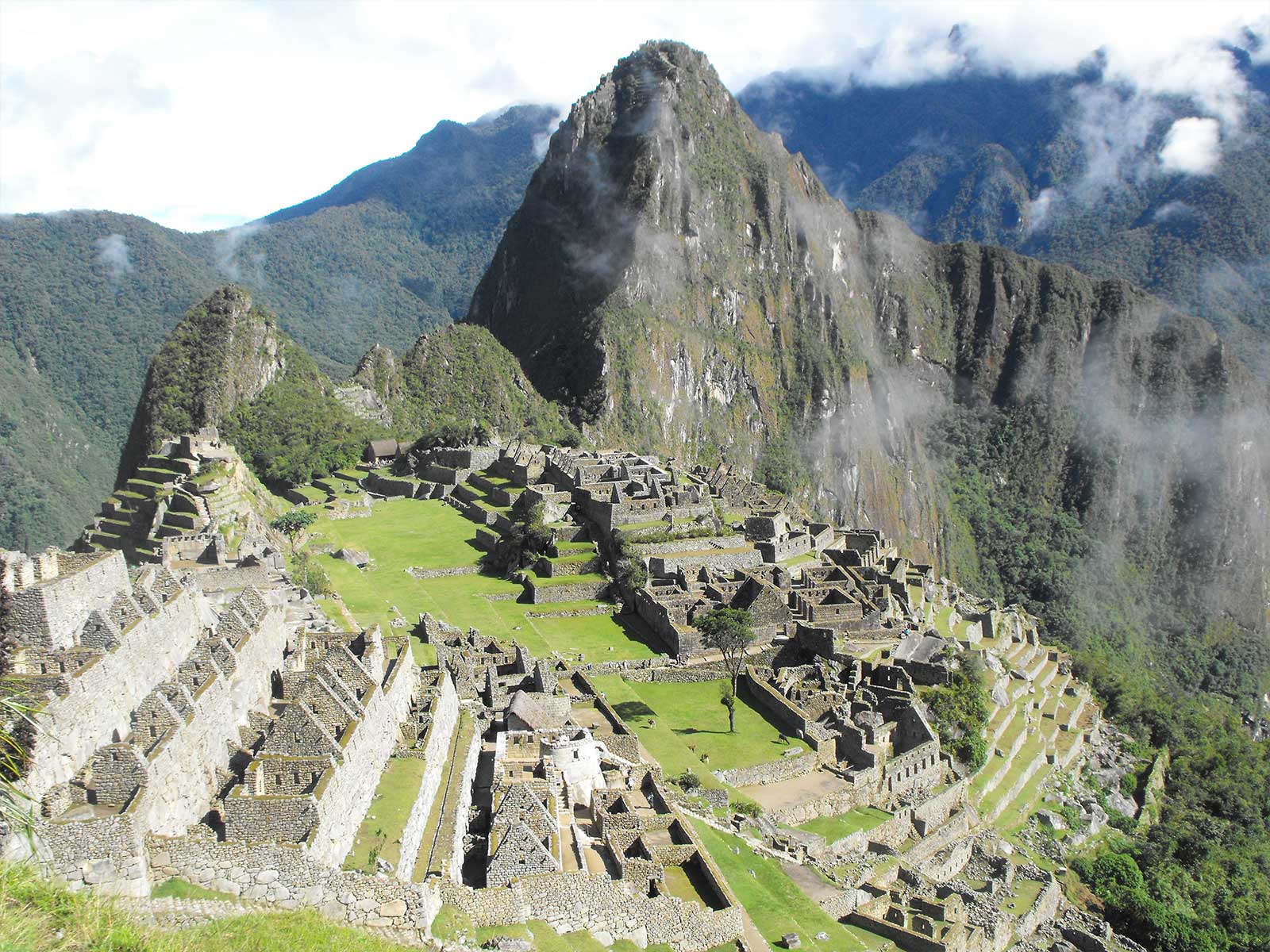The salt mines found in Peru have been a scenario that has been exploited since even before the arrival of the Spanish, and dates that we can remember. One of these impressive salt mines is located in Maras and is known as the Salineras de Maras, whose name in Quechua is Kachi Raqay. This group of salt mines is located in the district of Maras, which belongs to the province of Urubamba in the region of Cusco.
The salt mines of Maras are not only an interesting resource on a commercial level but also on a historical level since they are mines that have been exploited for centuries, so through them, you can learn about the extractive procedures that this has had since pre-Hispanic times.
Physically, the Maras Salt Mines surprise the visitor with more than three thousand wells, which are still worked by more than 360 families. Regarding the work that is currently done in the Maras Salt Mines, it is important to say that the custom and extraction work in the mines is an inherited work so only the descendants of the previous families can work the land, although the work is handled equally in a communal and non-family way. The extraction of salt from the Maras mines is done only by hand and the commercialization of the salt that is extracted from these lands is in charge of the Maras Sal association, which has been looking after the interests of the community since the end of the 80s.
The salt mines of Maras, due to their impressive territory and wealth, are capable of producing an average of two thousand tons of salt per year. The more than three thousand wells that make up the salt mines, measure approximately 5 square meters each and in them water is filtered that flows from a stream. The pools are distributed in platforms on the slopes of a mountain.
According to local legends, the salt that is produced in Maras is the product of the tears of Ayar Kachi, one of the brothers of the Inca legend who would have been locked up by his relatives in a mountain near the salt mines. It is said that the tears of Ayar Kachi were such that they began to turn into crystals which are currently circulating in the course of the stream that supplies the wells of Maras allowing the process of solidification and harvesting of the salt of this district.
In order to reach the Maras salt pans, the visitor must go to Ramal, which is located 48 kilometers from Cusco, and which can be reached in a private or tourist vehicle. Once in Ramal, you must take the detour that leads to the Salt Mines, which can only be followed on foot and has an extension of 6 kilometers, so it can be completed in less than an hour. It is recommended that the visits to the salt mines take place between the months of April and October, and in the morning hours. To access it, you must pay the modest cost of S/5.00.
Amazing history of Maras
The first shallow salt ponds in Maras were probably built by the Wari civilization between 500 and 1100 AD. Most of these pools, built along the steep slope of the Qoripujio mountain, were no more than 15 square feet (5 square meters) and 30 centimeters deep.
During the 12th and mid-14th centuries, the Inca Empire took over the operation of Maras. The Incas seasoned and preserved their food with salt. They may also have used the ore for mummification and other religious ceremonies. Ownership and management of the individual salt pans was given to the families living in the nearby community of Maras. The same process of salt extraction used by these families during Inca times has been passed down from generation to generation and is still practiced today.
But where does the salt from Maras come from?
The salt comes from a subway flow of salt water that bubbles up from the source on the Qoripujio mountain near an upper section of the valley. Therefore, an intricate network of narrow channels was built to direct the flow of this salt water to each pond. When the water evaporates, the remaining crystallized salt is carefully removed with shovels and wooden rakes.
Maras Salt Mines Health Benefits
Many experts recommend Maras pink salt for people suffering from hypertension because it has low levels of sodium chloride. Maras salt also contains calcium, iron, zinc and magnesium, making it a perfect medicinal option for skin conditions and to treat swelling.
For these effects to occur, it is important that you season your meals with Maras salt after you have finished cooking. This is because it loses its medicinal properties at temperatures above 40 degrees Celsius.
The salt collected can be bought on site very cheaply. Once it is packaged and sold in the supermarkets, prices tend to triple.
The salt ponds of Maras are becoming a popular tourist attraction in Cusco because of their amazing landscape and historical value. By visiting Maras, you will also be contributing to the farming community who will gratefully show you the traditions they inherited from their ancestors.
How to get to Maras?
To visit the salt mines of Maras you must travel to Cusco. From Lima to Cusco, the bus ride takes about 21 hours and tickets cost approximately 80 to 100 soles.
The town of Maras is located on a high plateau northwest of Cusco, 60 km away. To get there, you must take the detour along the two-lane road that connects Cusco and the town of Urubamba in the Sacred Valley. On the way you will see a green landscape of agricultural fields and snowy peaks in the distance. Halfway between the salt mines, in a rural region far from the main road, is the small town of Maras.
To visit the salt mines of Maras, you must pay a fee of 5 soles to the local community. This way you can walk the narrow trails that cross the hillside to observe this man-made wonder up close. The best way to appreciate this site to the fullest is to hire the services of a tourist guide who will explain the salt making process and answer your questions.
Also, to access the salt mines of Maras, you can take a full day tour to the Sacred Valley. It often includes a visit to Moray, an amazing Inca agricultural laboratory; Ollantaytambo, the stronghold where a bloody battle was fought against the Spanish; and Chinchero, a city of expert weavers. You can book your visit to the Sacred Valley at agencies located near the center of Cusco. The most economical tours cost between 60 and 70 soles per person and include a guide and transportation.
When is the best time to visit the salt mines?
The high season of the region is during the dry season (April to October), when sunny blue skies are the norm. This is a very pleasant time to go on a bicycle or horseback tour. The dry season is a good time to visit the pools because the constant sunlight (which evaporates the water and therefore produces more salt) increases the likelihood that the locals will tend to their salt pans.
On the other hand, the rainy season (November to March) is a beautiful time to visit the Sacred Valley. During these dates, the landscape, including the grass-covered terraces of Moray, presents a bright and colorful green shade.
Other tourist attractions
The city of Maras
Located 4 km from the salt mines, it is also worth visiting. This city was founded in 1556 by the Spanish who also made great use of the ponds. It has a baroque church from the 17th century. Its houses have preserved the stone portals and lintels characteristic of the colony
Moray Archaeological Site
Moray’s concentric terraces were probably used as a crop research center. Local farmers used them for agricultural purposes until well into the 20th century. Today, it exists as an archaeological site thanks to the visit of many travelers. They are visited together with Maras.
Built in a natural concave formation, the circular terraces are unlike any other agricultural site in the Sacred Valley. Their enigmatic shape seems almost otherworldly.
The panoramic view over the largest set of terraces descends 150 meters to its circular bottom and visitors look like ants down below.
Activities to do in the surroundings
Mountain biking
The trails that cross the Sacred Valley are the dream of any outdoor lover. One of the most exciting routes is that of Maras and Moray. Mountain biking is a great activity for all ages. It is advisable to practice it in good physical condition.
Horseback riding
If you like horses, you will love a horse ride in Maras, Moray and other outstanding places in the surroundings. It is an easy trail so that riders with little or no experience will not have to worry. There are tours starting from the Andean community of Picsuyo, in the Sacred Valley. Some agencies can take you from your hotel. There you will meet your horse and start the 1 hour climb to the highest point of the route. You will enjoy the views of snowy peaks as you ride along the mountain plateau towards Maras.
Salt Spa Treatments
Taking a sightseeing tour is not the only way to enjoy the Maras salt pans. There is a spa that includes an exfoliation with the Maras salt. Visit the Aranwa Sacred Valley Spa and Wellness Center, one of the most recommended hotels in the area.

